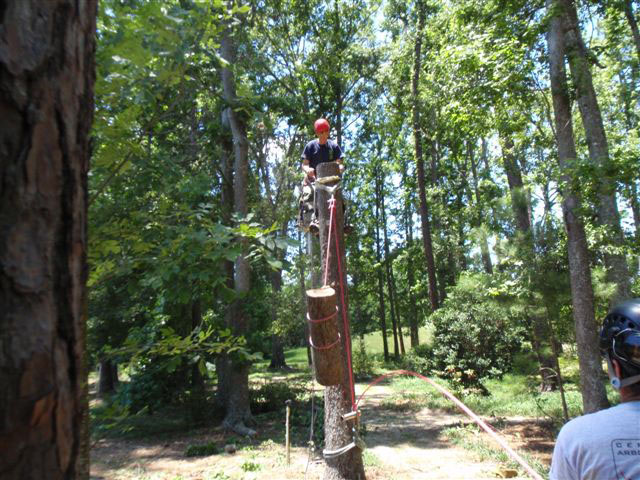Article contributed by North American Training Solutions
Rigging systems in tree care operations may have any number of goals, perhaps to direct the fall of an entire tree in a particular direction with mechanical advantage; to lower, under control, large wood or branches from high in the tree’s canopy; or to lift a wind-thrown tree off a structure. Obviously, all of these different systems, and the many other systems not mentioned, are going to have unique forces specific to their goal and operation, far too much material to discuss in an article of this length. However, an examination of, and some general knowledge about the most basic force present in many rigging operations — the 2-to-1 force factor —will help tree care crews design and develop safer, more efficient rigging systems.
A 2-to-1 force factor present in a rigging system, in effect, acts as a force multiplier. A piece suspended below the rigging point will result in the rigging point experiencing at least twice the weight of the piece. The part of the rope leading to the ground, whether it be in a lowering device, the hands of a ground worker or wrapped around the tree, must generate enough force to keep the piece suspended, thus experiencing approximately the weight of the piece itself. The other part of the rope, the one tied off to the piece itself, experiences only the weight of the piece. The only place in a static system that experiences a multiplication of the weight of the piece is the rigging point itself, whether it is an arborist block or simply a branch the rigging line runs over, and this multiplication is twice the weight of the piece.
The addition of any dynamic factor to the system, a piece or branch dropping into the system, increases the forces at the rigging point dramatically, as gravity will multiply the velocity of the piece or branch prior to it being “caught” by the rigging system, creating a force often seven to 10 times the weight of the piece. The presence of a 2-to-1 force factor dictates that the rigging point, whether it be sling and block or branch, be the strongest point within the rigging system.
The 2-to-1 force factor discussed here is only one of the many forces and vectors that may be present in any given rigging system or scenario, yet due to the sheer power of it, at least twice as much as the load being supported, and often much more in dynamic rigging, it is the rigging force that climbing arborists must be aware of, understand and incorporate into their systems and rigging gear choices, for their own safety and the safety of their crews.
North American Training Solutions started to deliver training seminars across the United States in 2005. Out of these seminars grew the need for further hands-on training programs. North American Training Solutions now offers a combination of training programs offered in specific locations and on specific dates in addition to private, customized programs for organizations wishing to bring trainers to their locations.


